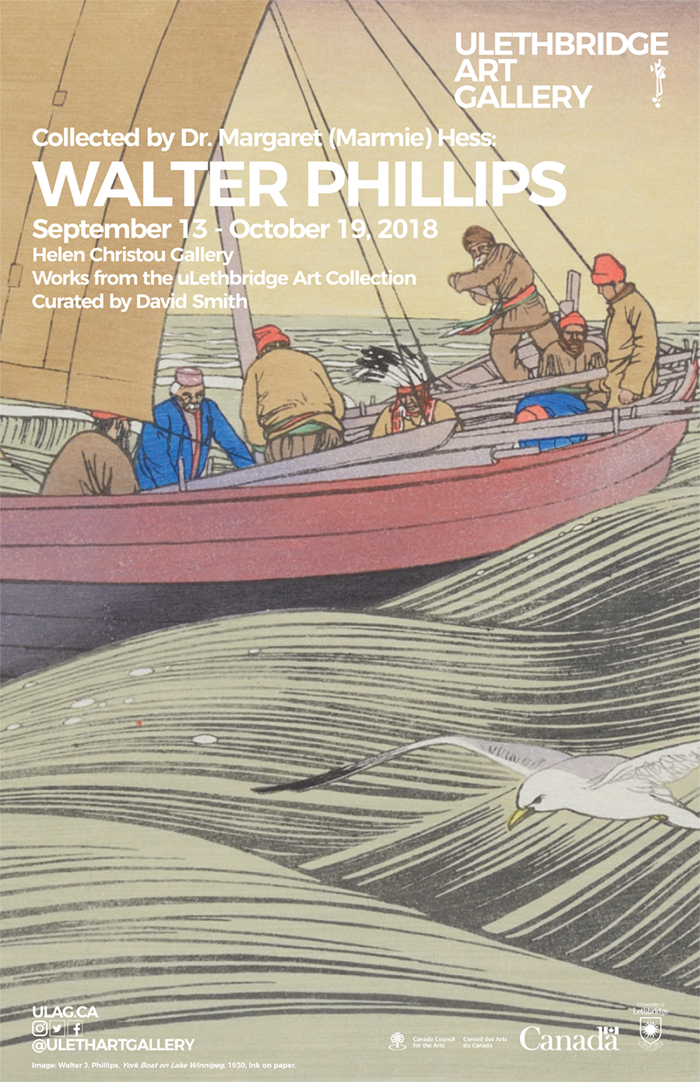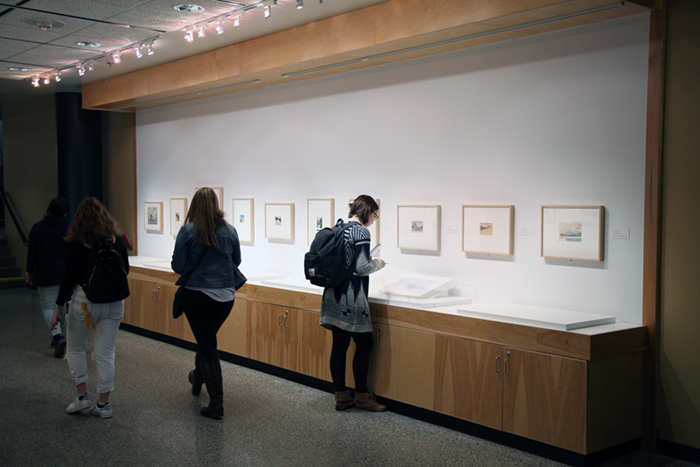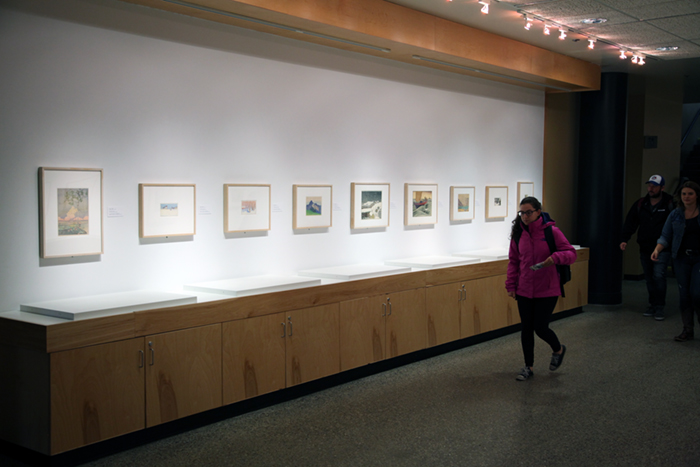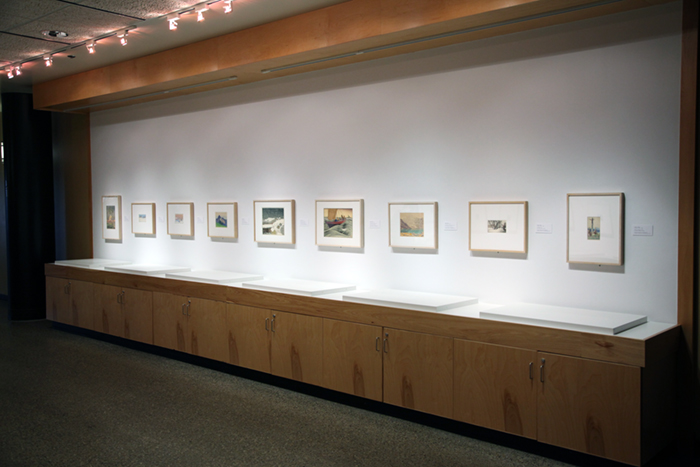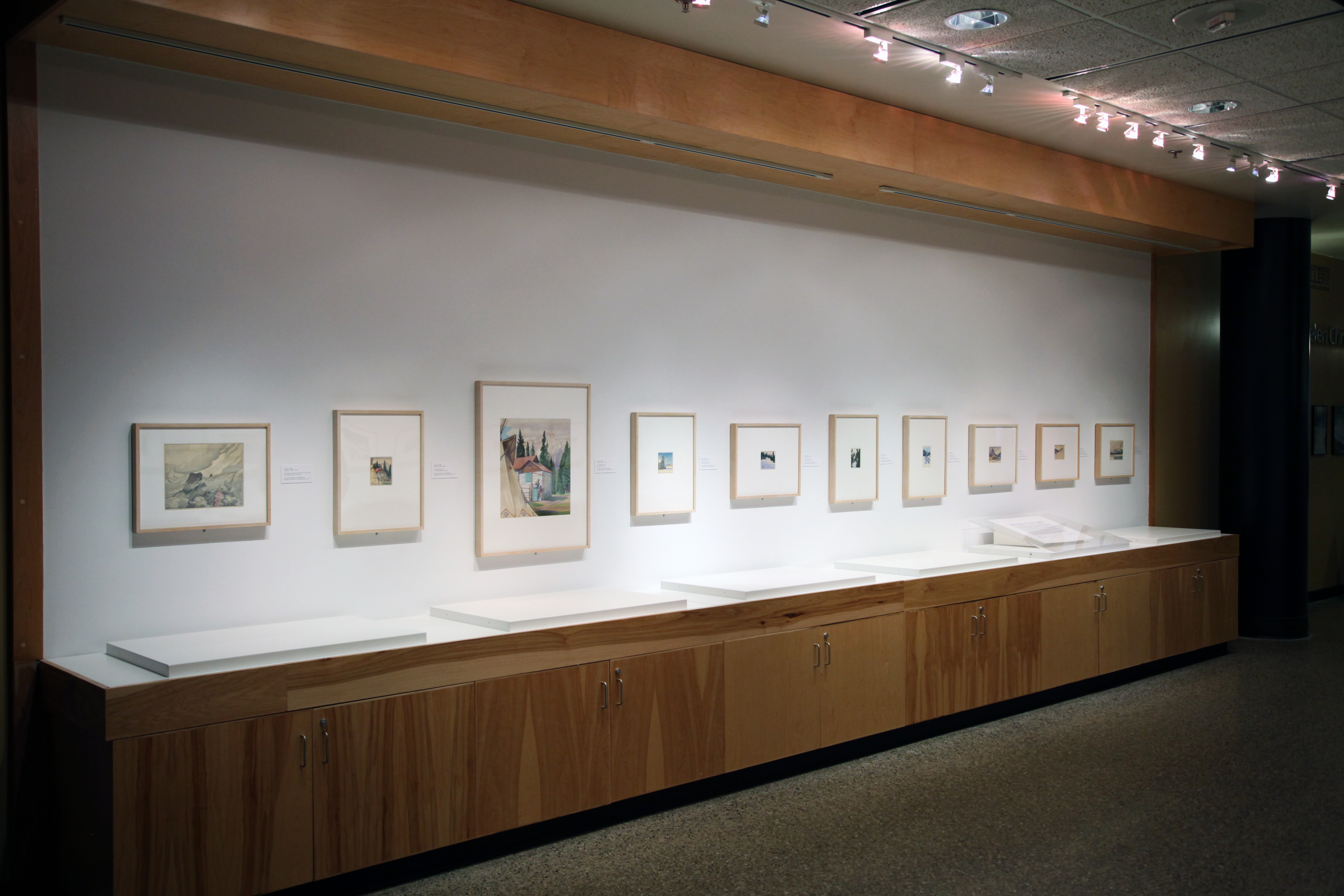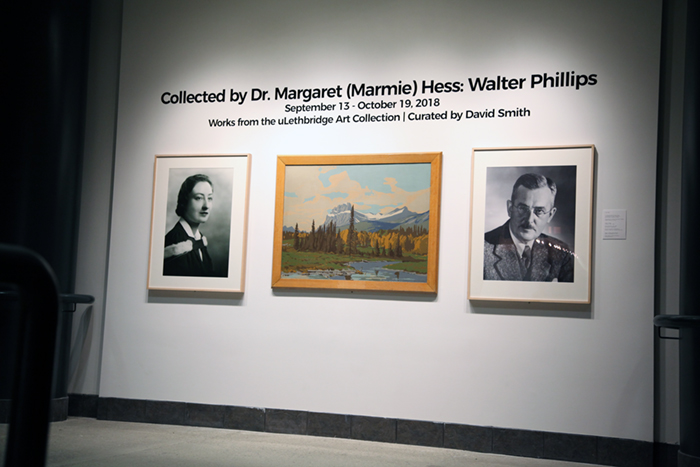Helen Christou Gallery
Collected by Dr. Margaret (Marmie) Hess: Walter Phillips
September 13 – October 19, 2018
Works from the uLethbridge collection
Curated by David Smith
A selection of colour woodcuts by Walter Phillips from the collection of the late Dr. Marmie Hess. As colleagues at the Banff School of Fine Arts, the collection demonstrates the strong appreciation Dr. Hess had for Phillips’ work.
Curatorial Statement
Walter Phillips was an English-born Canadian artist known for his work in watercolour and printmaking. He received international recognition during his lifetime for his proficiency in and popularization of coloured woodcuts derived from the Japanese method. Phillips was born on October 25, 1884 in England. When he was fourteen years old and studying at a boarding-school in Birmingham, he made regular trips to the art gallery and experienced firsthand the watercolours of landscape painters like David Cox and pre-Raphaelite artists like Edward Burne-Jones and others. The influence Cox had can be seen more clearly on Phillips’ watercolour technique where distracting elements are eliminated to achieve cohesion and balance. The international style of Art Nouveau, which looked to nature and also drew inspiration from Japanese wood-cuts, was popular during his formative years as well. The use of ornamental organic forms such as the trees in Norman Bay, 1920 demonstrate his knowledge of the movement. Phillips’ early awareness of these artists and his interest in contemporary art helped shape his mature practice.
In 1913, after working as a commercial artist in Manchester, Walter with his wife Gladys and their first son John emigrated to Canada and settled in Winnipeg, Manitoba. One of the first artists that he met was Cyril Barraud who was an English-born etcher. Their friendship resulted in Phillips’ first attempt at etching and in 1915 when Barraud left to join the war effort, Phillips purchased his press, copper plates and tools. A year later in 1916, the National Gallery of Canada purchased two of Phillips’ etchings. He continued working with etching and made 29 print editions until he produced his first coloured woodcut Winter, in an edition of 50 prints in 1917. From then on, the woodcuts began to dominate his printmaking practice because he preferred to work in colour.
In 1924, at the height of the colour print revival which had begun in Britain in the mid 1890s, Phillips and his family travelled to England where he met William Giles and Urushibara Yoshijirô. Giles was the President of the Colour Print Society and he arranged for a demonstration by Urushibara on the sizing of Japanese paper. Sizing paper refers to applying a layer (Phillips used a mixture of alum gelatin and water) onto the raw paper which when dry, changes the absorption and wear qualities of the paper. This technique was a very important advancement for Phillips and allowed him a much wider selection of Japanese papers to work with and enabled him to achieve a greater degree of subtlety in his colour variation. Later, he added more alum to his ratio which gives the surface a more eggshell or fresco like quality.
The prints in this exhibition were all collected by Dr. Margaret (Marmie) Perkins Hess and were gifted to the University of Lethbridge Art Gallery by her estate in 2017. Dr. Hess finished her Bachelor of Arts degree at the University of Toronto in 1938 and taught at the Banff School of Fine Arts (now the Banff Centre) and the Provincial Institute of Technology (now SAIT and ACAD) during WWII. In 1940, Philips was offered a position as an instructor at the Banff Summer School and the Phillips family moved to Calgary the following year. Walter Phillips taught for 20 summers in Banff and in 1948, he and his wife built a house and relocated there. Both Phillips and Hess were on staff at the Provincial Institute of Technology from 1941 until 1946. Provenance records for the Hess collection indicate that two thirds of the prints were Christmas gifts from the artist between 1940 and 1958. Phillips is known to have used unnumbered prints as Christmas cards every year between 1918 and 1958. In his later years, the list included nearly 300 people. Most of the remaining prints were collected in the few years following the artist’s passing in 1963. While no correspondence between the artist and Dr. Hess is known to exist today, she kept the prints in her possession until her passing in September of 2016, four months after her 100th birthday.
– David Smith, Assistant Curator / Preparator
